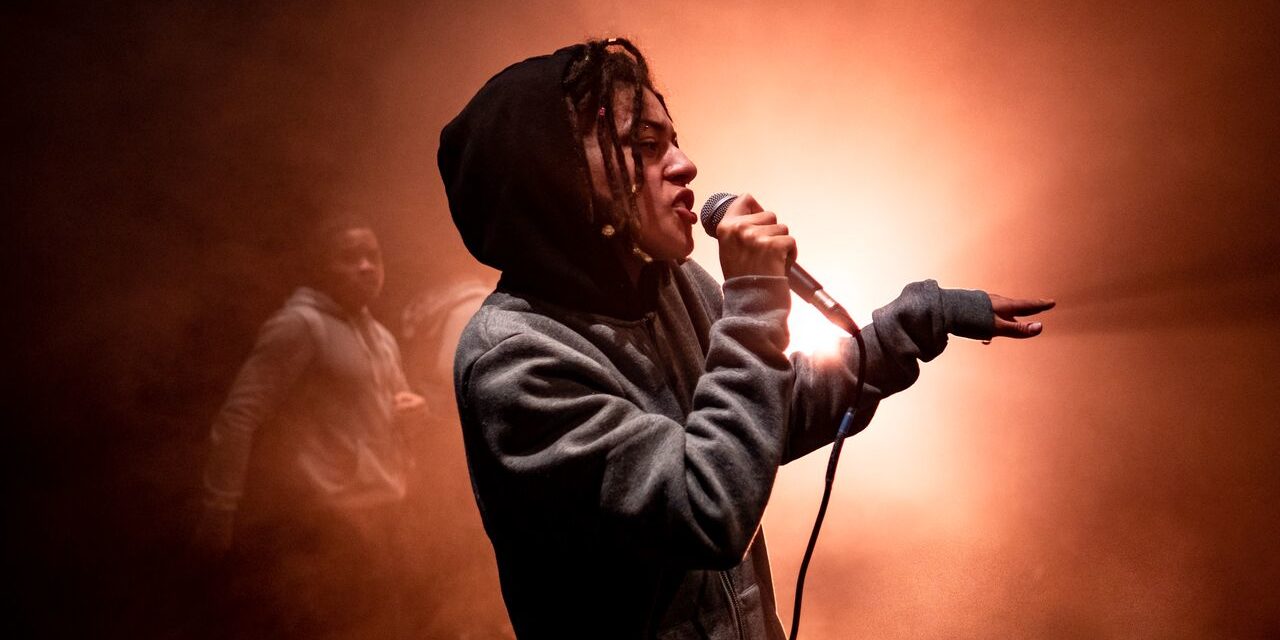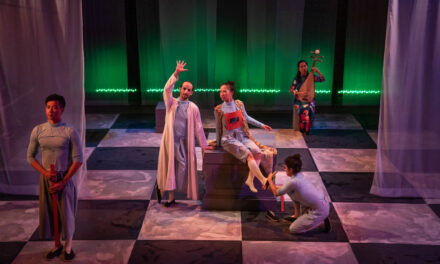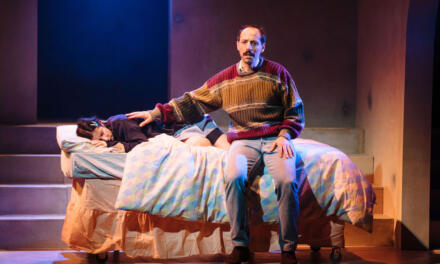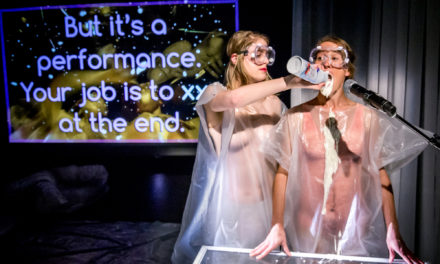Part of the Phoenix Season at the newly re-opened Grand Hall at Battersea Arts Centre is also BAC Beatbox Academy, a host of homegrown talent celebrating the tenth anniversary of its increasingly stellar existence. Led by Conrad Murray and David Cumming, the group, originating from south London’s estates, meets at BAC on Thursdays to nurture the music-making and spoken word affinities of its members, aged 0-29. Over the last ten years, BAC Beatbox Academy has toured nationally, headlined the Royal Festival Hall and been shortlisted as the finalists of the BBC2 television series The Choir. Certainly a story worthy of the Phoenix title.
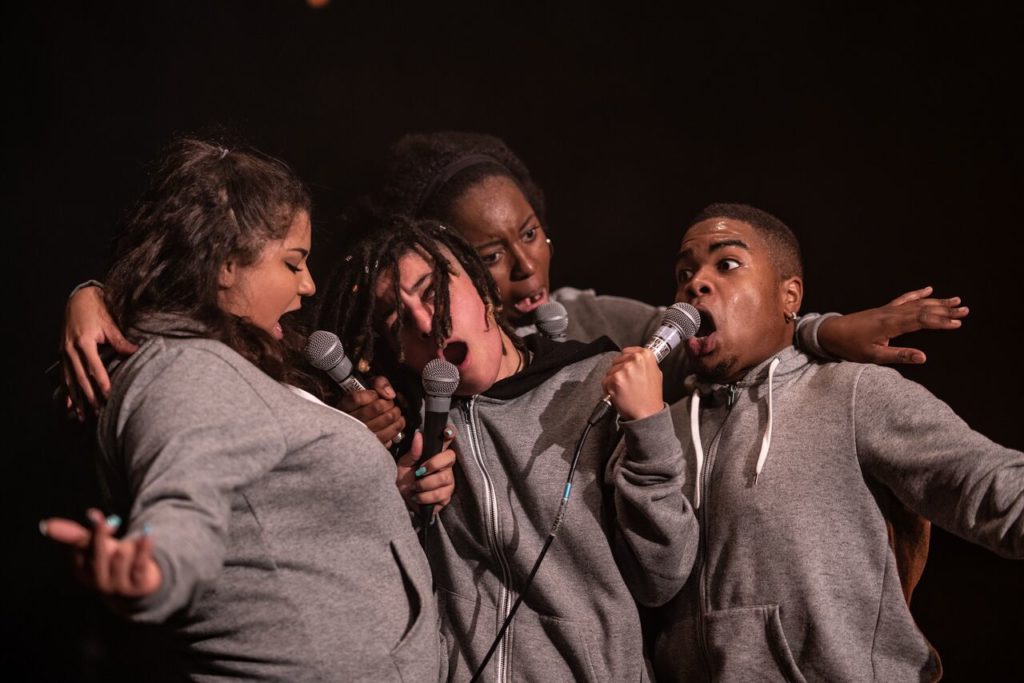
Frankenstein: How To Make A Monster. Photo Credit: Joyce Nicholls
There is more to this, however, as their show Frankenstein: How To Make A Monster sets a new benchmark not only for community theatre itself but for British contemporary theatre as a whole. There is much that can be learned from the BAC Beatbox Academy about audience rapport, performance prowess, but, chiefly, about the art of stage adaptation itself. The age-old problem that theatre-makers constantly encounter around fidelity to the original text is on this occasion handled with quiet elegance and artistic integrity, ultimately revealing a new reading and a new method of reading of the original text and hopefully settling the question once and for all.
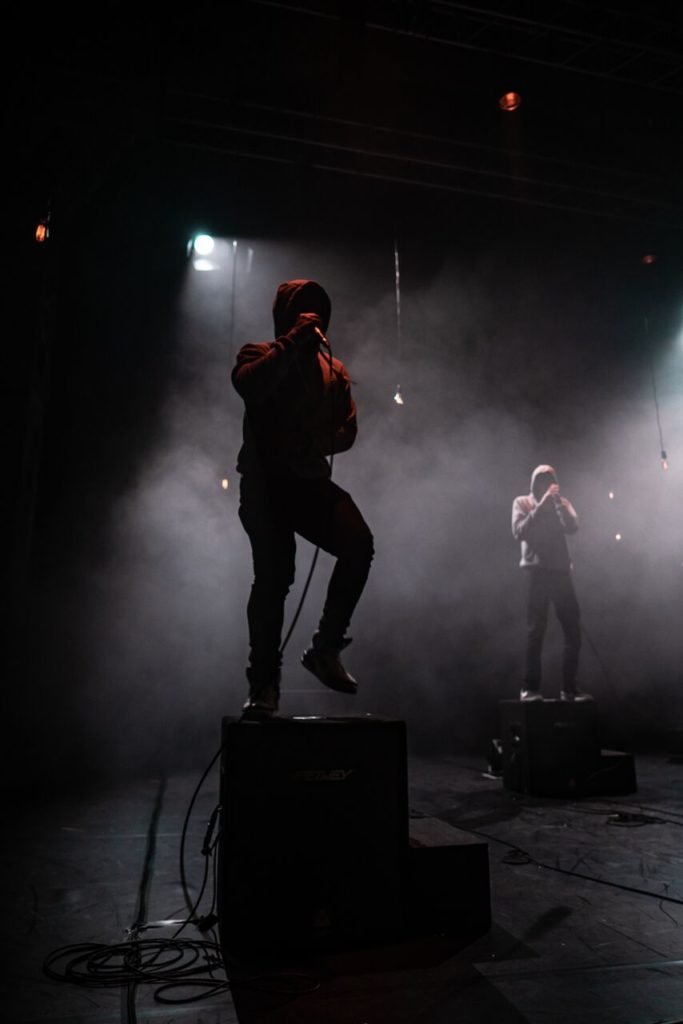
Frankenstein: How To Make A Monster. Photo Credit: Joyce Nicholls
The evening is framed in the spirit of a slam. It opens with director Conrad Murray’s lively address giving some background info on the project. With the main actors patiently seated on the stage in a cloud of haze and under the canopy of hanging LED lightbulbs, Murray brings on some younger members of the Beatbox Academy to warm us all up–it’s lucky it is half-term in London, so those primary schoolers can stay up late. The tone for the evening is set through rap numbers about the history of London riots, and some rousing aphoristic verse concluding in the declaration that “we can do it!” and “you can do it!” We are promised more spoken word, rap and beatbox battles following the end of the actual performance.
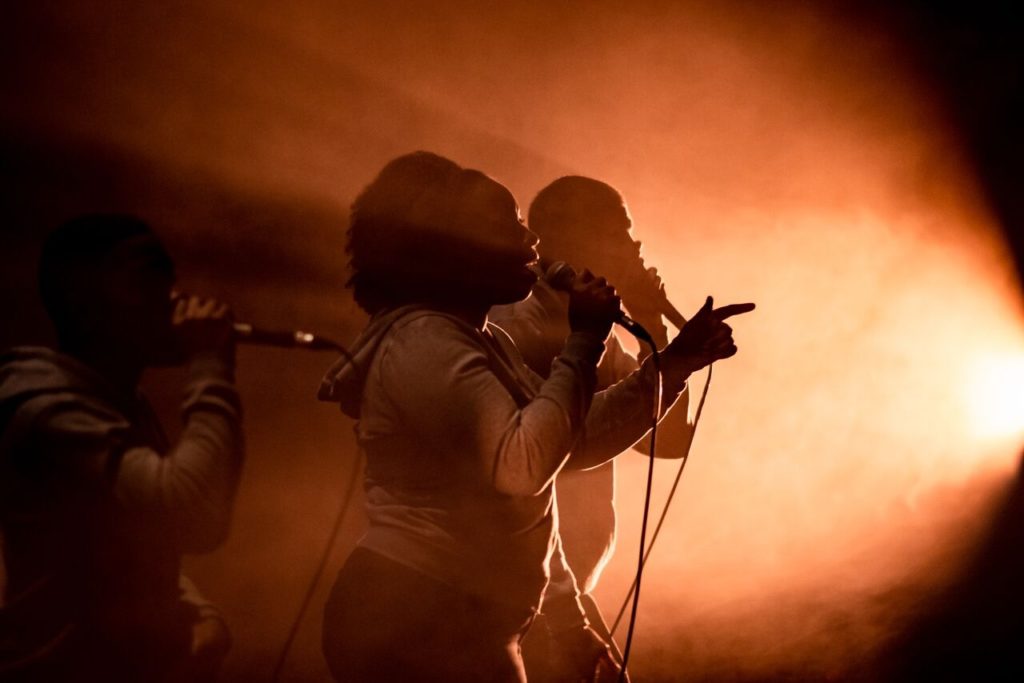
Frankenstein: How To Make A Monster. Photo Credit: Joyce Nicholls
The show begins with a soundscape evocative of a countryside–birds chirping, breeze, a running brook perhaps. We are informed that all the sounds we hear tonight are made live on the stage using the performers’ mouths and microphones alone, and are then transported into a busy urban soundscape–mobile phone gossip, traffic, noise. Having established the atmosphere and the basic theme of the show (nature vs. technology), the ensemble introduces themselves–six performers’ true personalities ranging from genius and angelic to cheeky and self-deprecating. The individuals work deftly together to bricolage fleeting but relevant musical references into stunning harmonies as a means of developing their show’s narrative and captivating the broadest range of audience–Prodigy, James Brown, as well as some more up to the minute soul and rap numbers, get wittily cited within the show to delighted laughter of recognition. And then there are original numbers too that have grown out of rehearsal jams and improvisations.
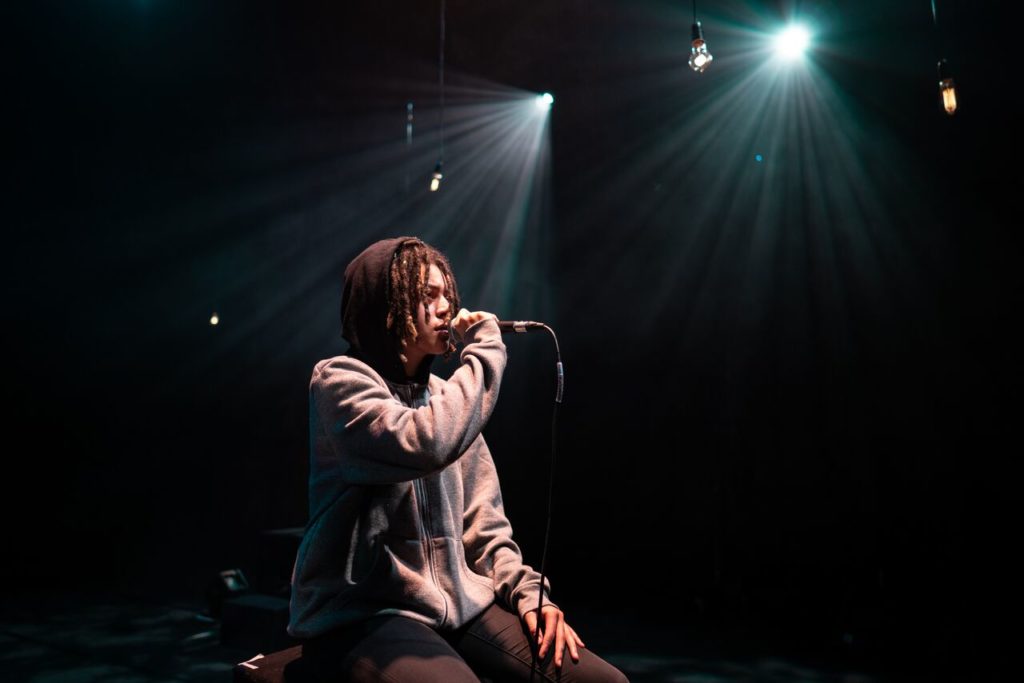
Frankenstein: How To Make A Monster. Photo Credit: Joyce Nicholls
The performance is organized into five chapters, titled The Tower of Knowledge, How to Make a Monster, Growing Pains, The World Uncensored, and Descent.
Rather than attempting literal storytelling or representation of Mary Shelley’s novel in any way, the company works to interpret its deepest meanings as they relate to our day and age. As such, the monster we have collectively created lives within the world of social media and within the world of impossible beauty ideals shaped by narrow consensus and leading to bullying.
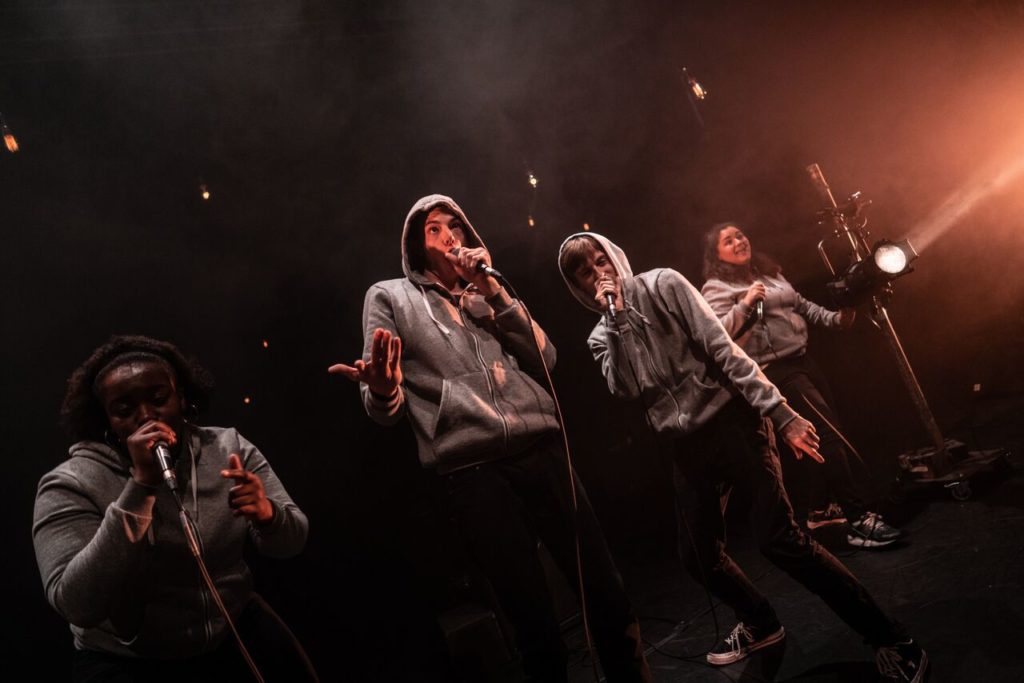
Frankenstein: How To Make A Monster. Photo Credit: Joyce Nicholls
There is true ire and sass, some flirting and teasing of the audience, as well as genuine pathos within these two hours on the stage, but the overwhelming feeling on our part is one of complete awe in relation to the dedication and the cumulative achievement of these young people.
The evening does conclude with the promised battles giving us more of a glimpse into the company as a whole, their way of working and the joy they generate by simply being together. It is a deeply infectious kind of joy summoned out of nothing other than the human voice and a sense of community it can generate, but BAC Beatbox Academy’s show sends the audience away on such a high that most other lavishly produced West End musicals would fail to match.
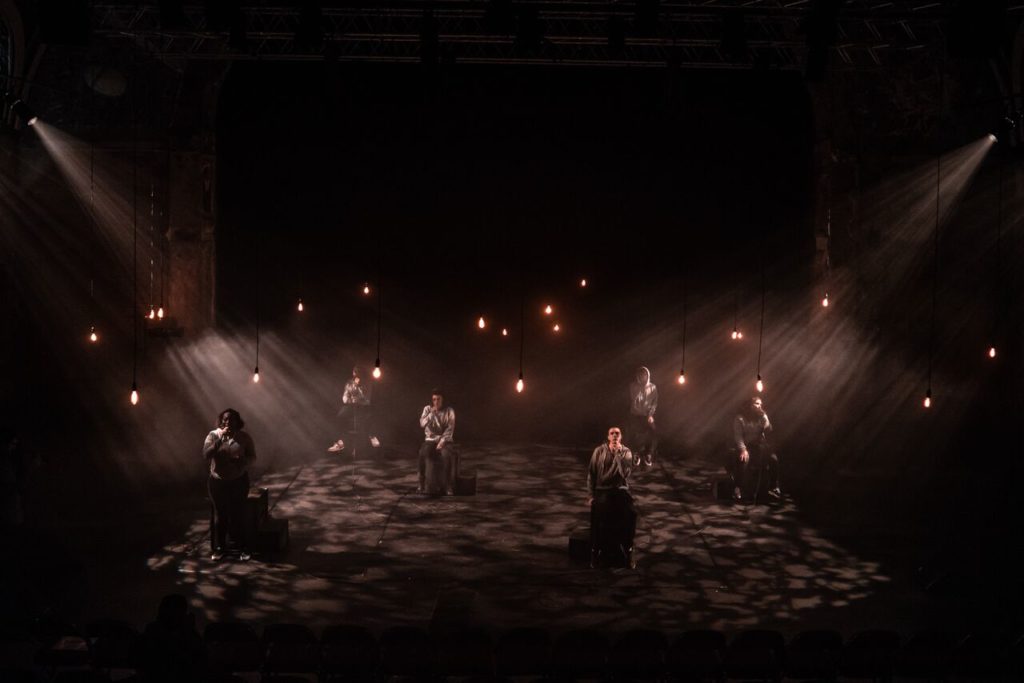
Frankenstein: How To Make A Monster. Photo Credit: Joyce Nicholls
Frankenstein: How To Make A Monster
Battersea Arts Centre
23-24 October 2018
Co-directors: Conrad Murray and David Cumming
Producer: Rosie Scudder
Producing Co-Ordinators: Nassy Konan and Fiona Sowole
Sound Engineer: Chris Bartholomew
Lighting Designer: Sherry Coenen
LX Operator: Michael Cunningham
Cast: Aminita (Aminita Francis), Glitch (Nadine Rose Johnson), Wiz-rd (Tyler Worthington), Native (Nathaniel Forder-Staple), ABH (ABH Beatbox), Grove (Beth Griffin)
This post was written by the author in their personal capacity.The opinions expressed in this article are the author’s own and do not reflect the view of The Theatre Times, their staff or collaborators.
This post was written by Duška Radosavljević.
The views expressed here belong to the author and do not necessarily reflect our views and opinions.

